上周六,两名美国宇航员搭载SpaceX的猎鹰9号火箭,从佛罗里达州卡纳维拉尔角发射,飞向国际空间站。这是人类历史上的首次商业载人航天发射。
道格拉斯•赫尔利和罗伯特•本肯也是自2011年7月美国航天飞机退役后第一批从本土搭载国产火箭和飞船前往空间站的宇航员。
此次由美国国家航空航天局(NASA)出资支持的任务将启动太空私有化的下一个主要阶段。未来将可能建造一个私人空间站,并在地球以外创建私人任务。
美国东部时间上周日上午10点16分,赫尔利和本肯抵达国际空间站,并将航天器与空间站的端口对接。该飞船的对接机构在飞越中国北部和蒙古时连接到该节点。2014年,美国宇航局委托两家私营公司——航空巨头波音公司和埃隆•马斯克领导的SpaceX公司,制造能够将人类运送到国际空间站的运载工具。从某种程度上说,波音公司落后于其竞争对手SpaceX,但如果能解决星际飞船舱的故障问题,它的首次飞行任务预计将在明年完成。
下面让我们通过照片,感受这个历史上的里程碑时刻。(财富中文网)
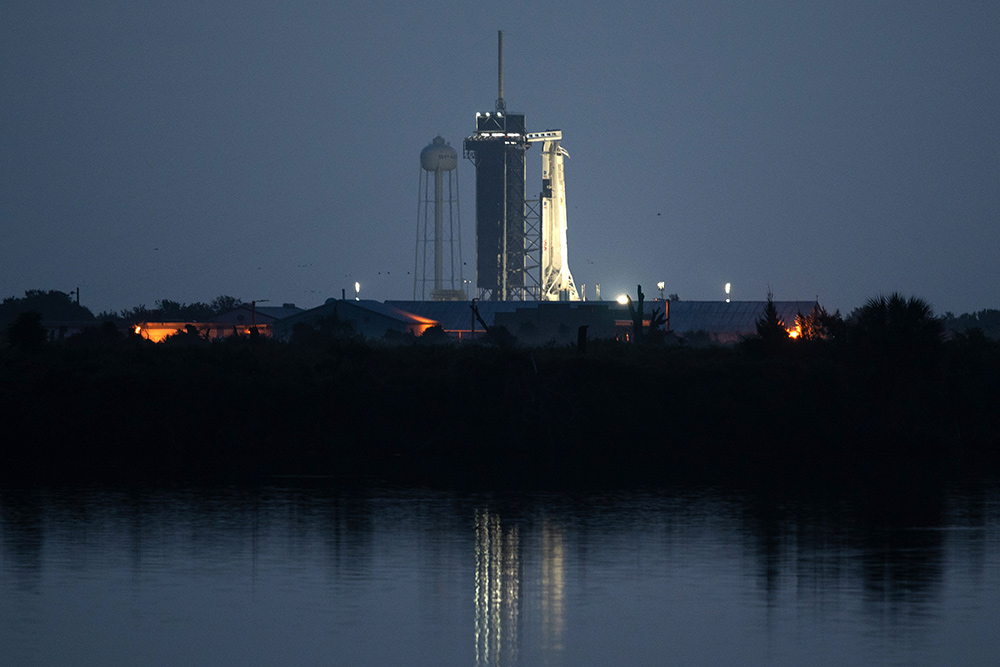
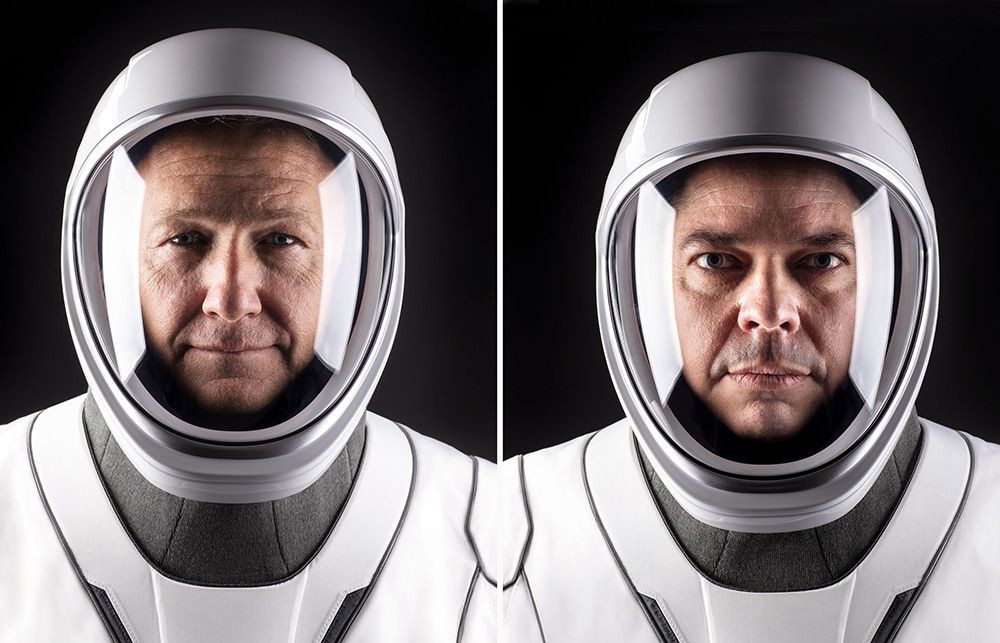
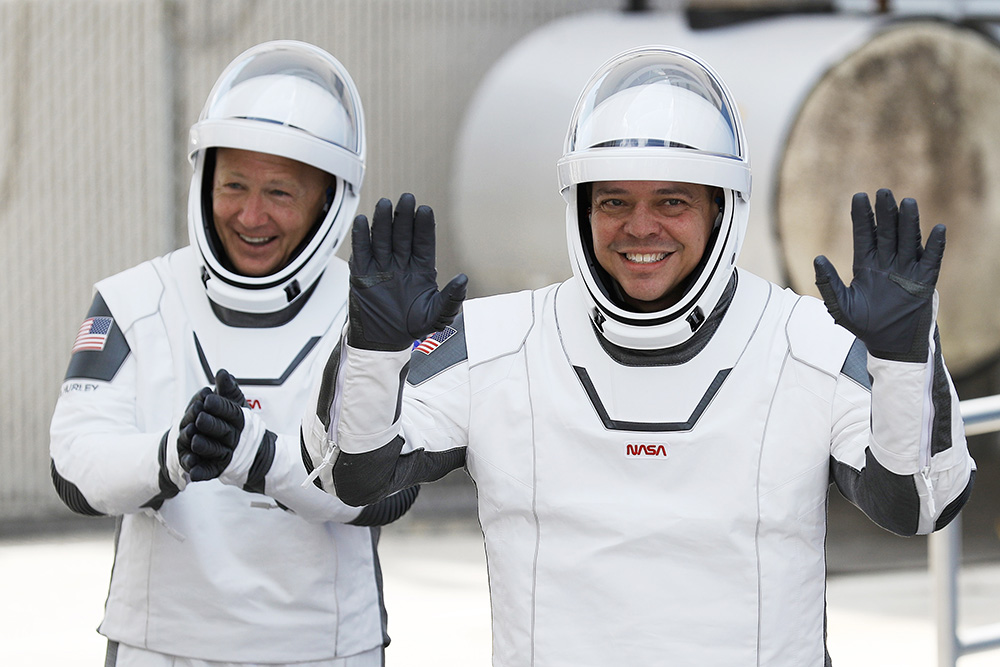
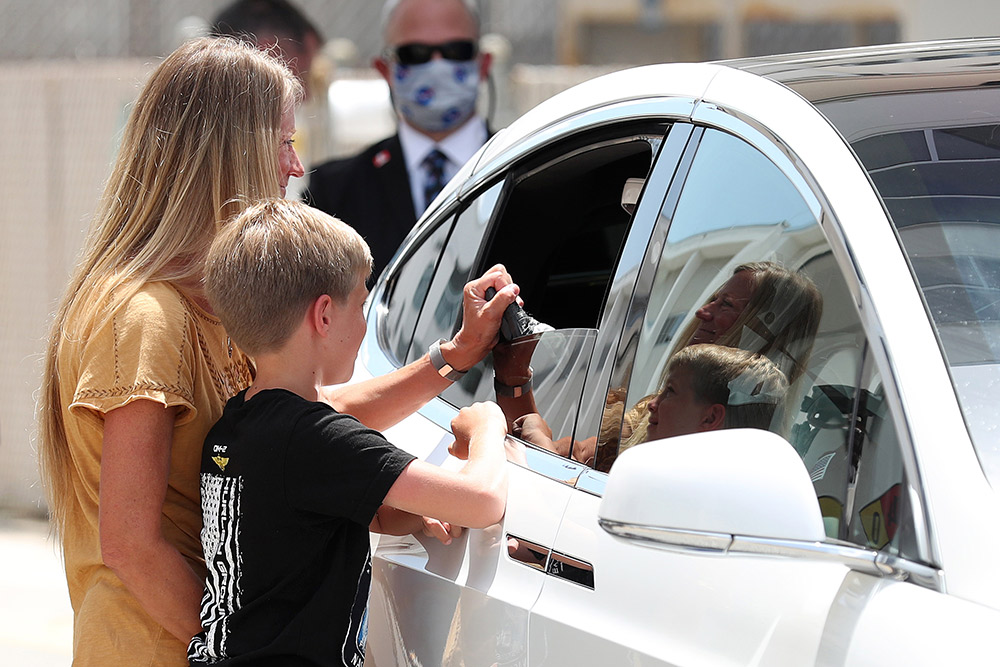
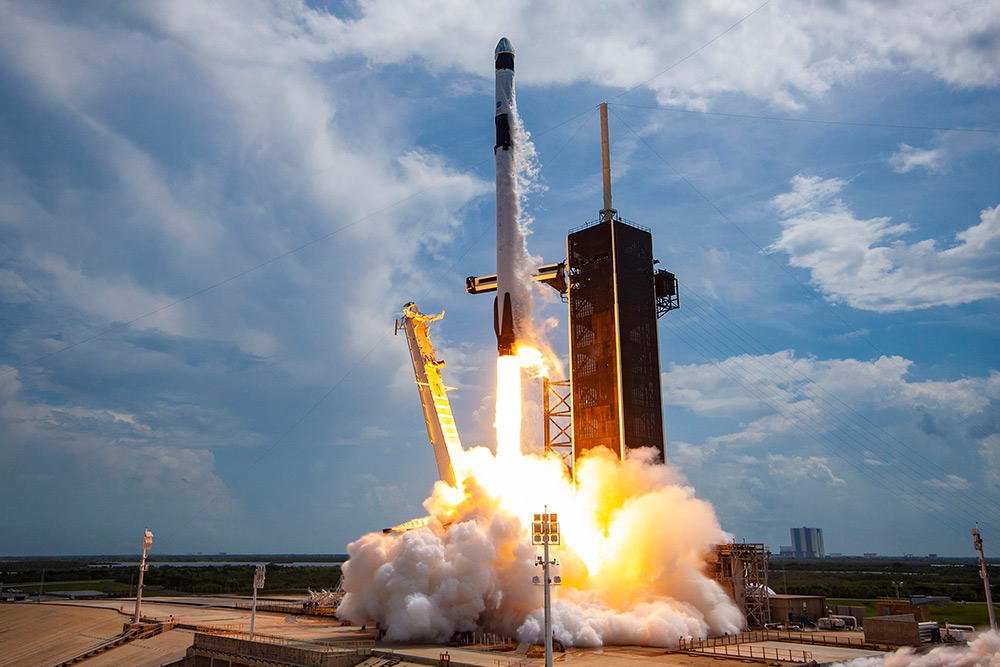
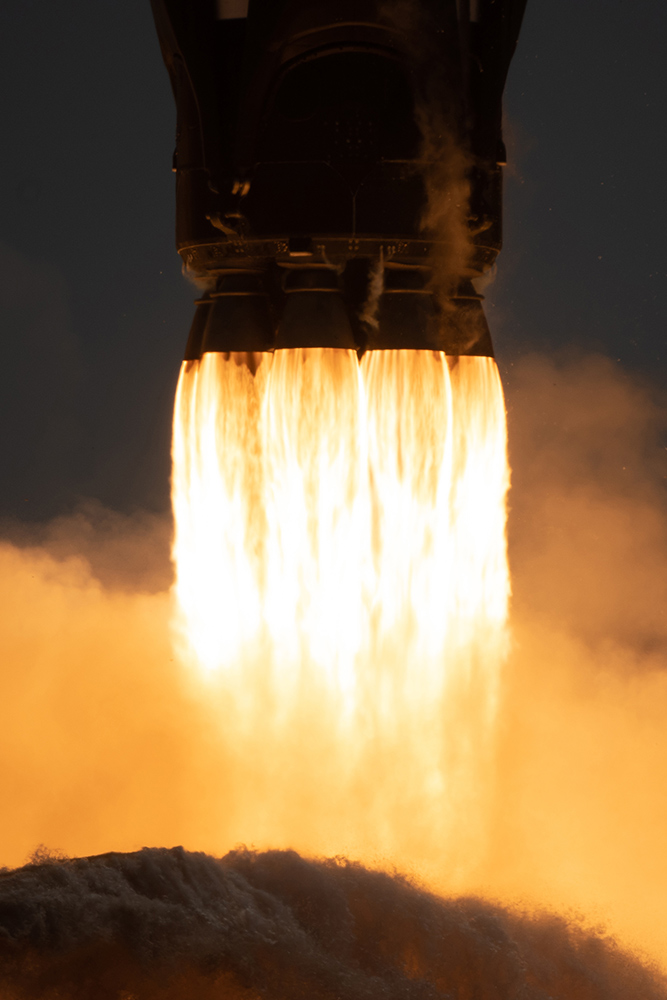
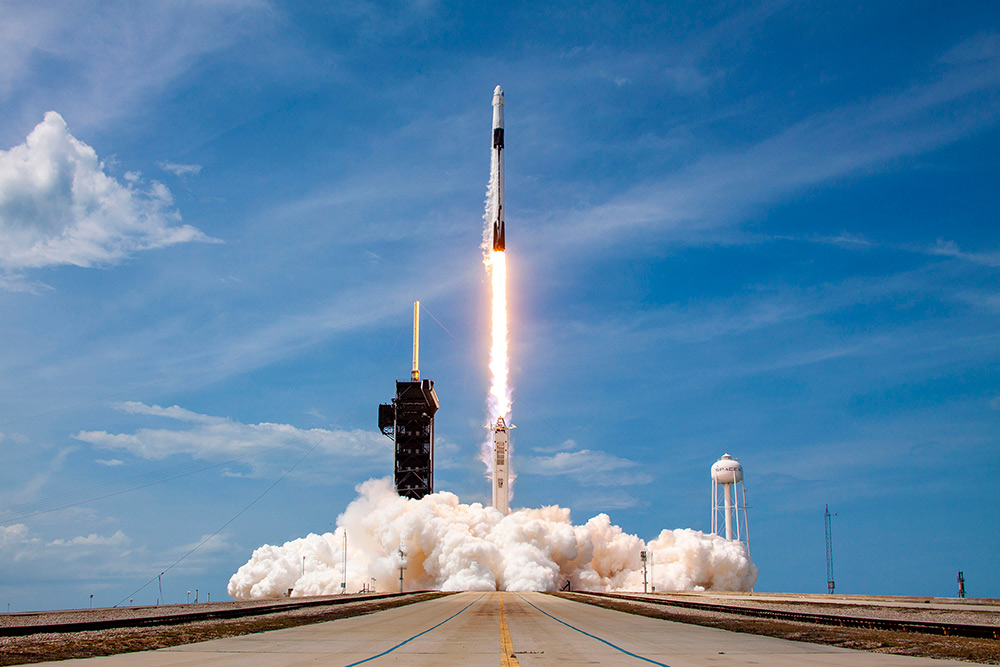 任务期间,机组人员和SpaceX任务控制器将验证航天器的环境控制系统、显示和控制系统、机动推进器和自动对接能力等的性能。图片来源:Bill Ingalls/NASA
任务期间,机组人员和SpaceX任务控制器将验证航天器的环境控制系统、显示和控制系统、机动推进器和自动对接能力等的性能。图片来源:Bill Ingalls/NASA
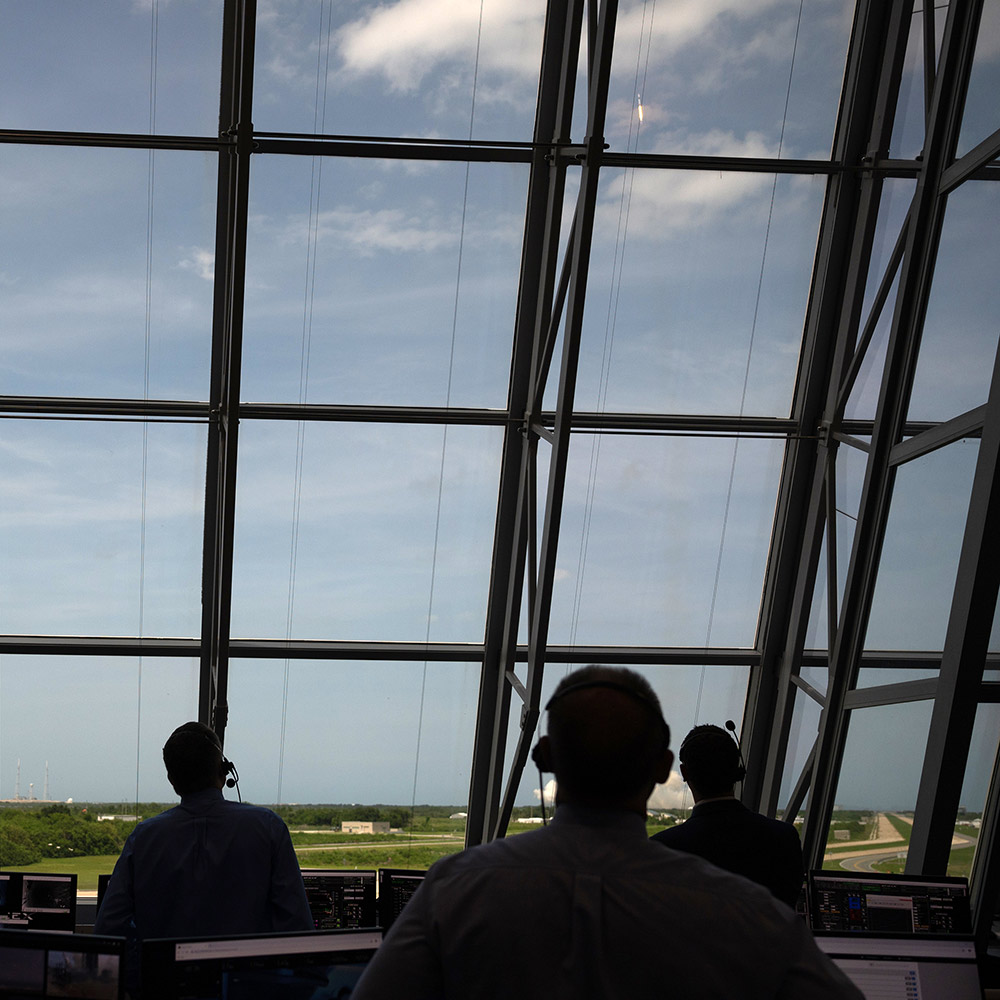 NASA和SpaceX工作组在佛罗里达州肯尼迪航天中心的发射控制中心监控SpaceX猎鹰9号火箭的发射。图片来源:Joel Kowsky/NASA
NASA和SpaceX工作组在佛罗里达州肯尼迪航天中心的发射控制中心监控SpaceX猎鹰9号火箭的发射。图片来源:Joel Kowsky/NASA 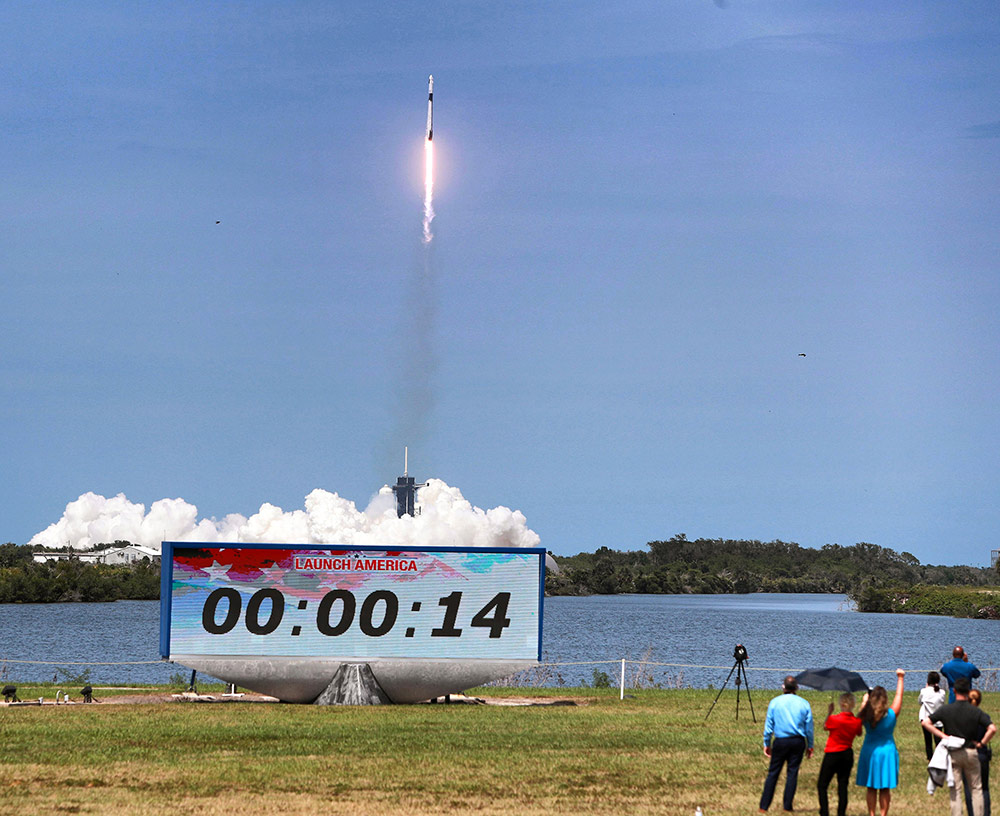 载人龙飞船的机组人员对国际空间站进行长达19小时的追踪。图片来源:Joe Burbank—Orlando Sentinel/Tribune News Service via Getty Images
载人龙飞船的机组人员对国际空间站进行长达19小时的追踪。图片来源:Joe Burbank—Orlando Sentinel/Tribune News Service via Getty Images 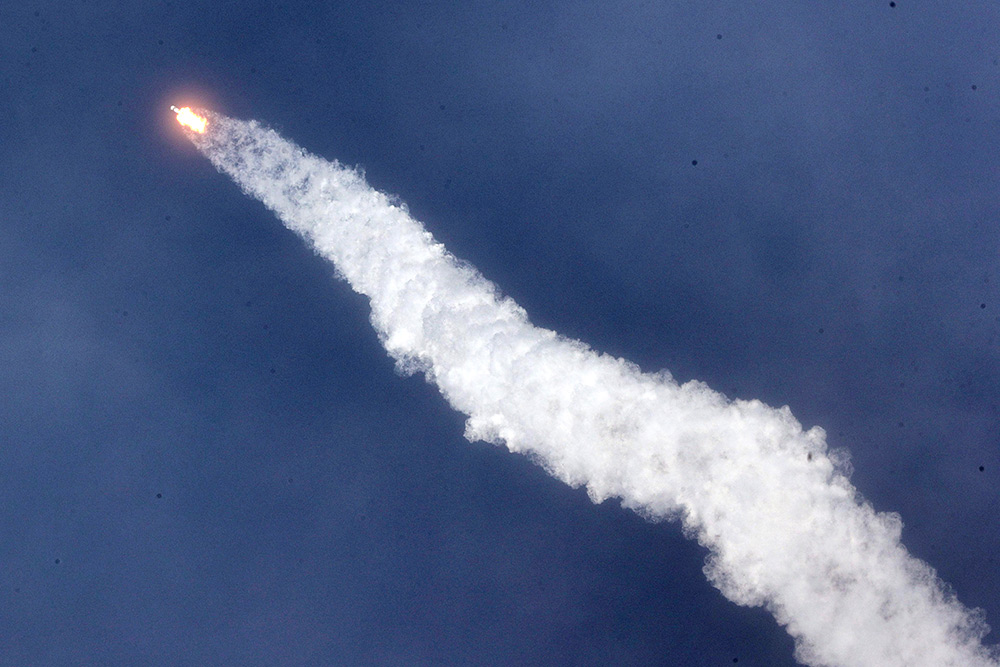 据NASA称,猎鹰火箭第一级的9台梅林发动机,产生超过170万磅推力(775吨推力)。图片来源:Joe Burbank—Orlando Sentinel/Tribune News Service via Getty Images
据NASA称,猎鹰火箭第一级的9台梅林发动机,产生超过170万磅推力(775吨推力)。图片来源:Joe Burbank—Orlando Sentinel/Tribune News Service via Getty Images 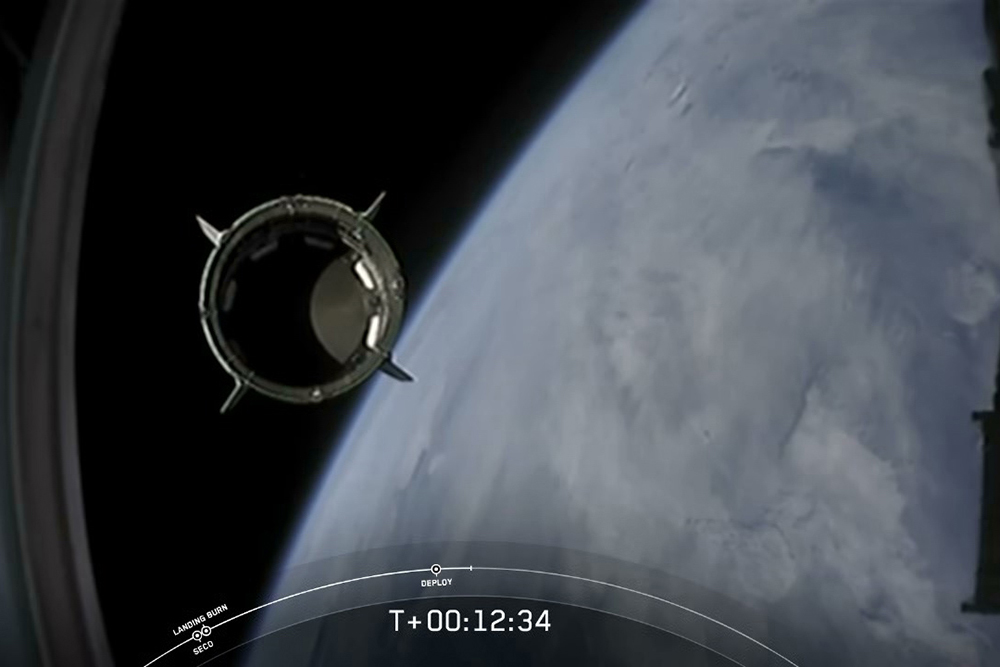 SpaceX的龙飞船与猎鹰9号火箭的第二级助推器分离。图片来源:NASA TV
SpaceX的龙飞船与猎鹰9号火箭的第二级助推器分离。图片来源:NASA TV 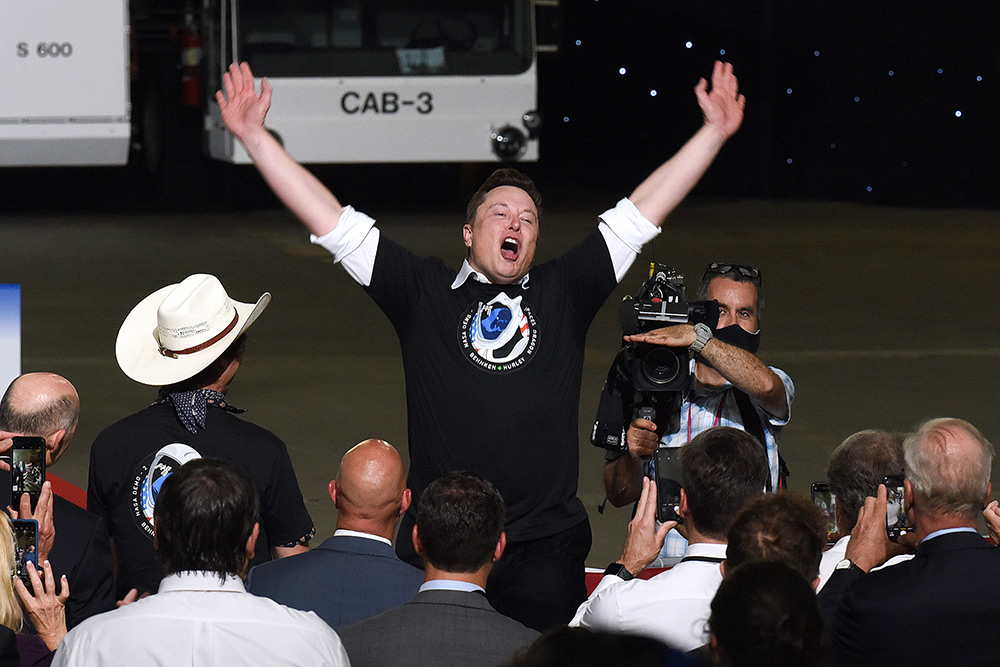 SpaceX的首席执行官埃隆•马斯克庆祝猎鹰9号火箭发射成功,这也标志着美国商业载人航天时代的到来。图片来源:Paul Hennessy—SOPA Images/LightRocket via Getty Images
SpaceX的首席执行官埃隆•马斯克庆祝猎鹰9号火箭发射成功,这也标志着美国商业载人航天时代的到来。图片来源:Paul Hennessy—SOPA Images/LightRocket via Getty Images 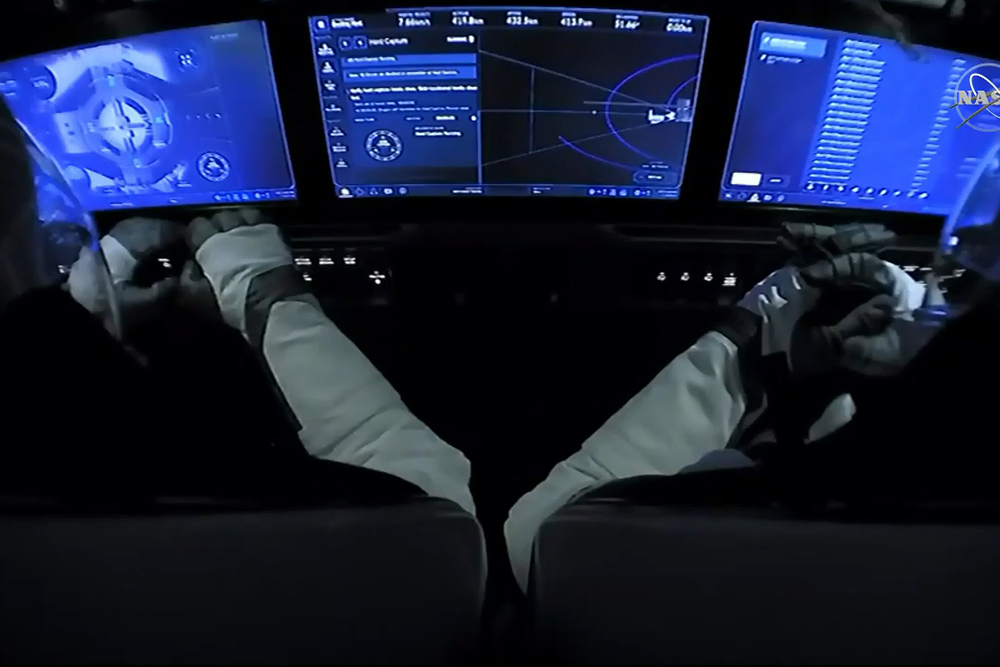 2020年5月31日,NASA的SpaceX Demo-2宇航员在SpaceX 龙飞船内通过显示器监查飞船与国际空间站的对接情况。图片来源:NASA TV
2020年5月31日,NASA的SpaceX Demo-2宇航员在SpaceX 龙飞船内通过显示器监查飞船与国际空间站的对接情况。图片来源:NASA TV
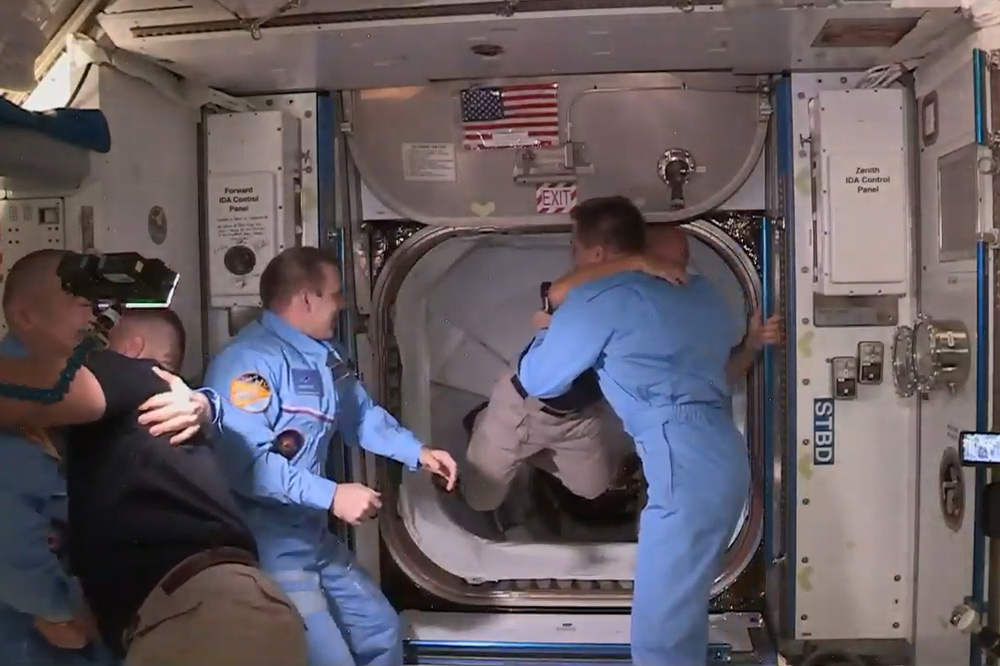
编译:于佳鑫
上周六,两名美国宇航员搭载SpaceX的猎鹰9号火箭,从佛罗里达州卡纳维拉尔角发射,飞向国际空间站。这是人类历史上的首次商业载人航天发射。
道格拉斯•赫尔利和罗伯特•本肯也是自2011年7月美国航天飞机退役后第一批从本土搭载国产火箭和飞船前往空间站的宇航员。
此次由美国国家航空航天局(NASA)出资支持的任务将启动太空私有化的下一个主要阶段。未来将可能建造一个私人空间站,并在地球以外创建私人任务。
美国东部时间上周日上午10点16分,赫尔利和本肯抵达国际空间站,并将航天器与空间站的端口对接。该飞船的对接机构在飞越中国北部和蒙古时连接到该节点。2014年,美国宇航局委托两家私营公司——航空巨头波音公司和埃隆•马斯克领导的SpaceX公司,制造能够将人类运送到国际空间站的运载工具。从某种程度上说,波音公司落后于其竞争对手SpaceX,但如果能解决星际飞船舱的故障问题,它的首次飞行任务预计将在明年完成。
下面让我们通过照片,感受这个历史上的里程碑时刻。(财富中文网)
编译:于佳鑫
A SpaceX Falcon 9 rocket lifted off from Cape Canaveral, Fla., on last Saturday carrying two astronauts to the International Space Station, marking the first-ever commercial launch of humans into orbit.
Astronauts Douglas Hurley and Robert Behnken are also the first people to lift off into orbit from the United States since the last space shuttle flight in July 2011.
The mission, paid for by NASA, is expected to kick off the next major phase in the privatization of space, which has so far focused on satellite launches. Plans include the launch of private astronauts, the construction of a private space station, and possibly the creation of private missions beyond Earth.
Hurley and Behnken arrived at the ISS’s Harmony port on Sunday, docking at 10:16 a.m. EDT while the spacecraft was flying about 262 miles above the northern border of China and Mongolia. In 2014, NASA commissioned Elon Musk–led SpaceX and aerospace giant Boeing to build launch vehicles capable of carrying humans to the station. Boeing has fallen somewhat behind its rival, with its first mission expected next year if it can work out glitches with its Starliner capsule.
Scroll below to see the historic mission through photos.
A SpaceX Falcon 9 rocket with the company’s Crew Dragon spacecraft on board is illuminated on the launchpad at Launch Complex 39A as preparations continue for NASA’s SpaceX Demo-2 mission, May 30, 2020, at NASA’s Kennedy Space Center in Florida.
Astronauts Douglas Hurley (left) and Robert Behnken
NASA astronauts Doug Hurley (left) and Bob Behnken emerge from the Operations and Checkout Building on their way to the SpaceX Falcon 9 rocket and Crew Dragon spacecraft.
Sitting in a Tesla, NASA astronaut Doug Hurley says goodbye to his wife, Karen Nyberg, and son, Jack, after leaving the Operations and Checkout Building and heading for the SpaceX Falcon 9 rocket.
The successful takeoff of the SpaceX Falcon 9 rocket, marking a new era in human spaceflight as American astronauts once again launch on an American rocket from U.S. soil to low Earth orbit for the first time since the conclusion of the Space Shuttle Program in 2011.
The Demo-2 mission is the first launch with astronauts of the SpaceX Crew Dragon spacecraft and Falcon 9 rocket to the International Space Station as part of the agency’s Commercial Crew Program.
During the mission, the crew and SpaceX mission controllers will verify the performance of the spacecraft’s environmental control system, displays and control system, maneuvering thrusters, autonomous docking capability, and more.
NASA and SpaceX teams monitor the launch of a SpaceX Falcon 9 rocket from the Launch Control Center at NASA’s Kennedy Space Center in Florida.
The Crew Dragon embarks on its 19-hour pursuit of the International Space Station.
According to NASA, the nine Merlin engines on the Falcon rocket’s first stage generate more than 1.7 million pounds of thrust as the vehicle climbs away from Florida’s Space Coast. At about one minute into the flight, the rocket passed through Max Q, the point of peak mechanical stress.
SpaceX’s Crew Dragon spacecraft separates from the second stage of the Falcon 9 rocket.
SpaceX CEO Elon Musk celebrates the successful launch of a Falcon 9 rocket, marking the start of the commercial crew era of U.S. human spaceflight.
NASA’s SpaceX Demo-2 crew members monitor their displays inside the SpaceX Crew Dragon during docking operations at the International Space Station on May 31, 2020.
NASA’s SpaceX Demo-2 crew members Robert Behnken and Douglas Hurley are greeted by Expedition 63 crew members Chris Cassidy, Ivan Vagner, and Anatoly Ivanishin at the International Space Station on May 31, 2020.






